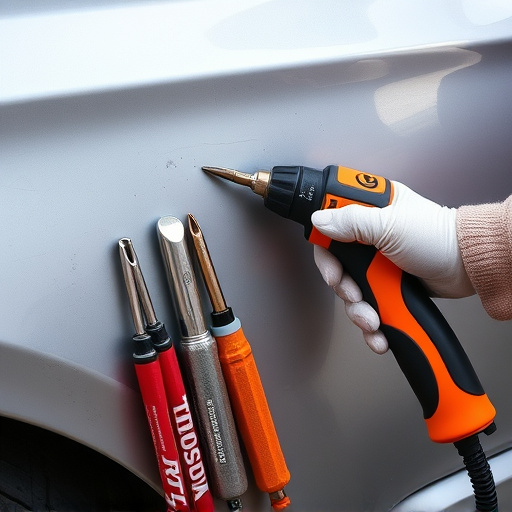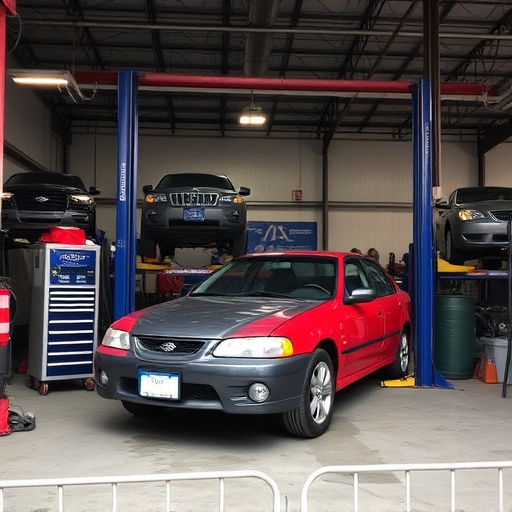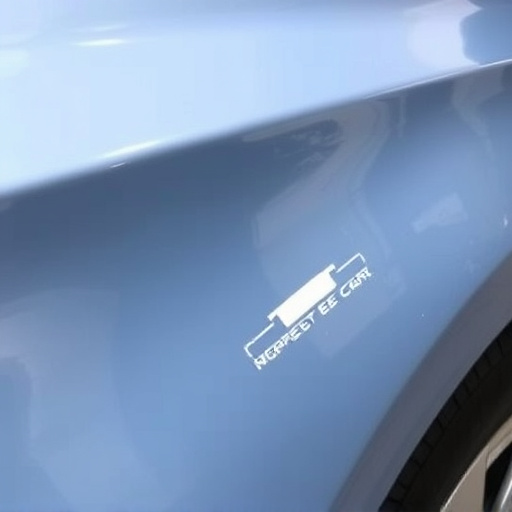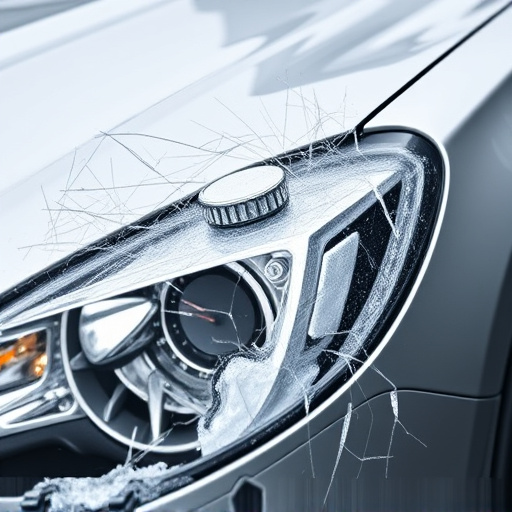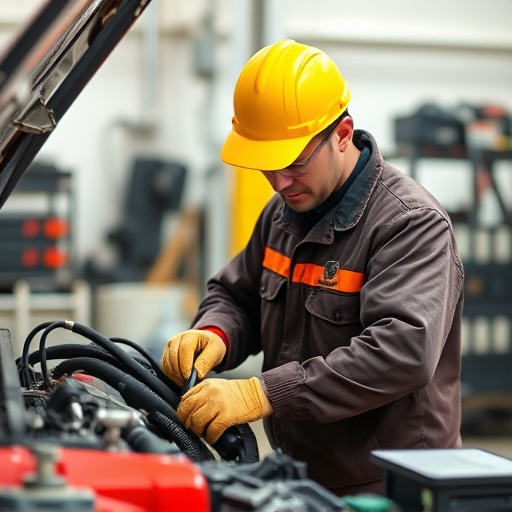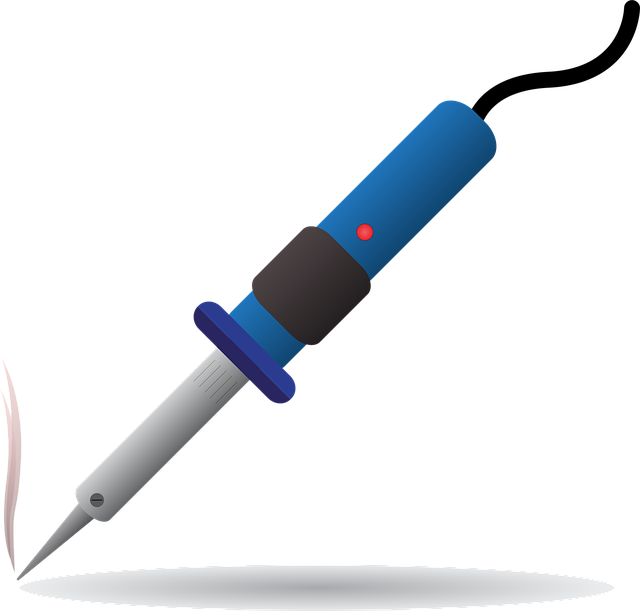Safety glass replacement requires compatible adhesives for secure bonding and durability. Proper preparation, including surface cleaning and moisture control, is vital. Correct adhesive selection based on curing time, flexibility, and UV/temperature resistance ensures long-lasting bonds in diverse conditions, such as automotive applications where high-performance adhesives maintain structural integrity and aesthetics.
When it comes to safety glass replacement, understanding the unique properties of these enhanced panels and selecting the right adhesives is crucial. This comprehensive guide navigates the process, beginning with an in-depth look at safety glass and the critical role adhesives play in ensuring structural integrity. We then delve into preparation techniques for optimal adhesion, followed by step-by-step instructions on applying adhesives for maximum bonding.
- Understanding Safety Glass and Adhesives
- Preparation for Effective Adhesion
- Applying Adhesives for Optimal Bonding
Understanding Safety Glass and Adhesives
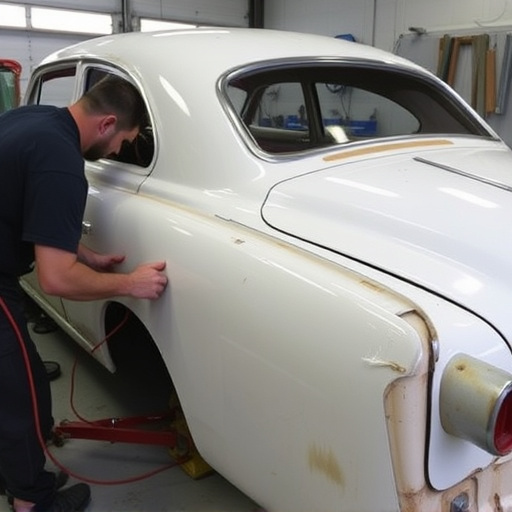
Safety glass, a specialized type of laminated glass, is designed to provide enhanced safety and protection when broken. Its unique construction features an interlayer that holds the glass together even if it shatters, preventing dangerous sharp edges from forming. This makes safety glass a popular choice for applications where impact resistance and debris control are essential, such as in automobile windshields, bathroom shower doors, and skylights.
Adhesives play a critical role in the successful installation of safety glass. The right adhesive ensures that the glass remains securely bonded to its frame or substrate, enhancing structural integrity and preventing any potential hazards. When replacing safety glass, whether for a damaged windshield in a collision repair shop or a shower door in an automotive repair services facility, understanding the compatibility of adhesives with safety glass is paramount. This includes considering factors such as curing time, flexibility, and resistance to environmental factors like UV exposure and temperature fluctuations, all of which contribute to long-lasting, secure bonds.
Preparation for Effective Adhesion
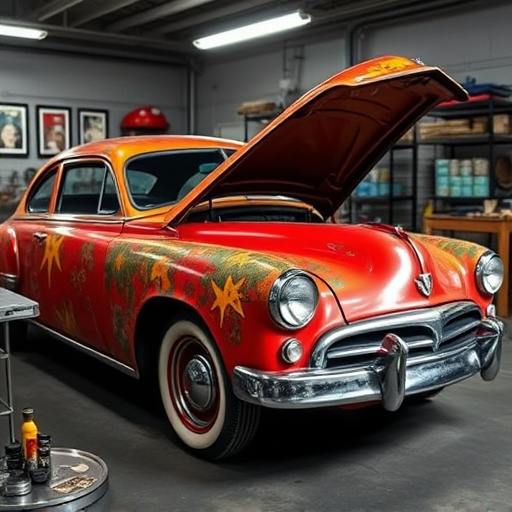
Before applying adhesives during safety glass installations, proper preparation is key to ensuring effective adhesion. Start by cleaning the surfaces thoroughly with a degreasing agent to remove any dirt, grease, or debris that could hinder the adhesive’s bond. This step is crucial, especially when dealing with broken or damaged glass in a collision repair shop or during body shop services.
Next, consider the type of adhesive suitable for safety glass replacement. Different adhesives have varying strengths and compatibility with specific materials. Consult manufacturers’ guidelines to choose the right adhesive for your project. Additionally, ensure the surfaces are dry, as moisture can compromise adhesion. By following these preparation steps, you’ll create an ideal environment for the adhesive to bond securely, resulting in a durable safety glass installation.
Applying Adhesives for Optimal Bonding
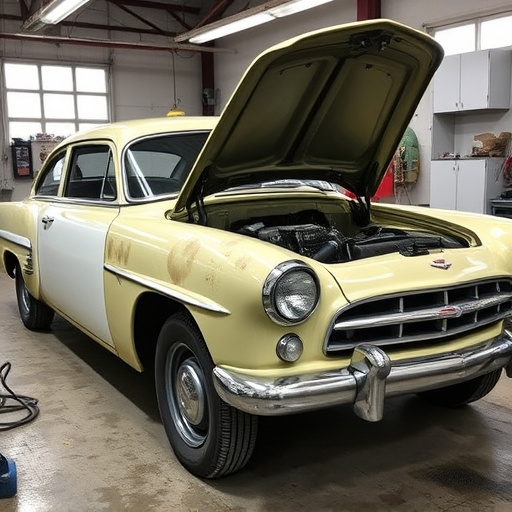
Applying adhesives correctly is paramount for achieving optimal bonding during safety glass replacements. When installing safety glass, whether it’s for a window or a vehicle, using the appropriate adhesive ensures the glass remains securely in place under various conditions. For instance, choosing an adhesive designed to withstand temperature extremes and ultraviolet radiation is crucial for outdoor applications, preventing the glass from loosening over time.
For auto body services or car paint repair, where safety glass is often integrated into vehicle structures, professionals rely on high-performance adhesives that seamlessly bond with both the glass and the surrounding materials. These adhesives must be applied precisely, following the manufacturer’s guidelines for surface preparation and coverage, to ensure a strong, lasting connection. This meticulous approach not only guarantees the structural integrity of the glass but also enhances overall aesthetics in car paint services, ensuring a seamless fit that complements the vehicle’s design.
When conducting safety glass replacements, understanding the unique properties of safety glass and selecting the right adhesives are paramount. By properly preparing surfaces, choosing the appropriate adhesive, and applying it with precision, you can ensure optimal bonding strength and long-lasting durability. This meticulous approach guarantees that your safety glass installations meet the highest standards of both safety and aesthetics.

